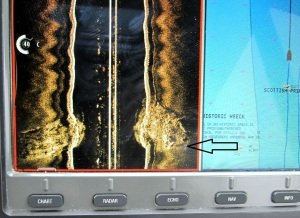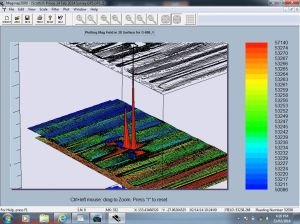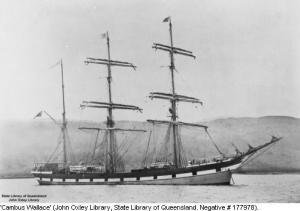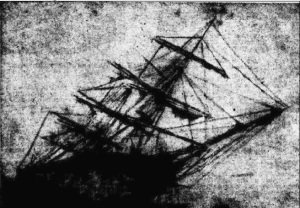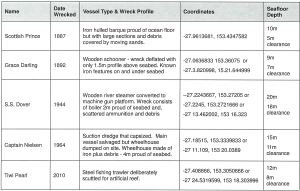Many of the younger readers may not be familiar with Franky Avalon and his 1959 hit song ‘Venus’, which contains a plea from a young man to the Roman Goddess of Love to help him find that elusive special someone (if you’re feeling nostalgic you can find him performing the song at: http://www.youtube.com/watch?v=fakpqLDEQAo). Much like the young soul yearning to discover love, we also went in search of Venus as part of the final leg of our magnetometer trials. The small snow-brig Venus made an unscheduled stop in Moreton Bay for supplies in 1855 while transporting sugar from Manila to Melbourne. The Venus attempted to enter the Bay without a pilot and took the wrong channel, foundering off the northern end of Moreton Island on a sand bank system that was subsequently named after the wreck.
A key issue for magnetometer survey was narrowing the search area. Historical research was conducted but sources were few, given the vessel was lost when Queensland was still part of the colony of New South Wales. Newspaper reports from the time did, however, provide quite detailed information on the events leading up to the wrecking, with some vocal critics stating that a missing navigation marker played a key role. In order to help refine the search area, archaeologists Amelia Lacey and Toni Massey liaised with Mr Ian Jempson, Chief Executive Officer of the Queensland Maritime Museum and a former naval navigator. The Queensland Maritime Museum holds copies of historic admiralty charts for Moreton Bay, which were digitised and then georeferenced by Amelia. Ian was able to cross reference the historic sailing instructions with the published account of the wreck’s position and develop a theory of where it is located now. The varying positions of the banks over time were also tracked on the charts.
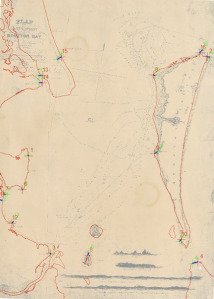
Image 1: A georeferenced copy of the 1846 navigation chart for Moreton Bay
Not unexpectedly, there was a significant margin of error in the georeferenced charts and this resulted in a larger search area than hoped. To supplement the mapping team’s work I sought information about potential sightings of the wreck from public informants and marine parks staff.
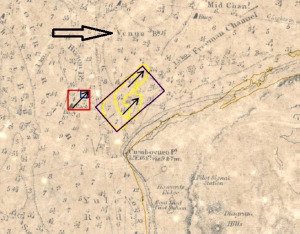
Image 2: The search area (marked by the larger box with yellow contours) for the wreck of the Venus superimposed on the historic chart. Note the name Venus Banks immediately above the search area.
The team set out under clear skies but with a freshening breeze to begin the process of surveying the search grid. Alas, however, as tends to happen in affairs of the heart, there were soon problems when the magnetometer failed after the first transect. After some unsuccessful attempts to redeploy the fish, we realised that there was a connection problem and returned to base to switch to the shorter umbilical cable, which is normally used to link the mag with a towed side scan sonar – fortunately this was a very shallow site. Unfortunately, we had lost a lot of time and could not complete the planned search grid that day; we therefore decided that the best option was to run the mag past a target further to the east north east that was reported to us by two separate sources. The estimated position revealed an almost immediate positive return with the mag, but little was visible on the side scan. This site definitely needs to be investigated further, but to date we have been unable to return to the area as repairs to the mag and vessel availability have caused delays. Love remains elusive but we hope to resume our quest in the autumn of 2015 when the conditions are expected to be more favourable.

